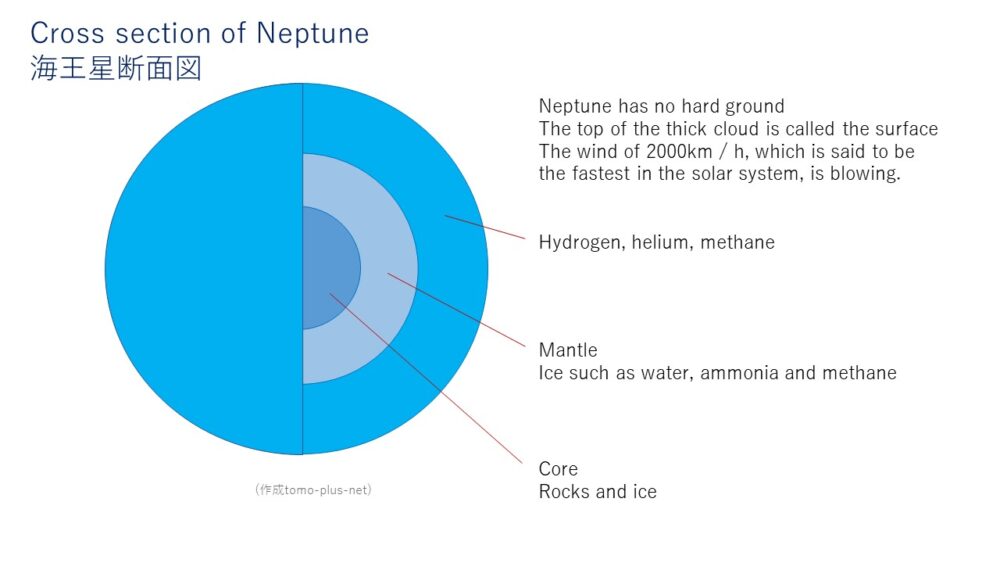Last time I wrote about Neptune, but this time I would like to write about its constituents. I’m not an expert, so I’ll write it easily.
You will proceed from the outside as if you were rushing into Neptune from space.
First, the outer layer is made up of components such as hydrogen, helium, and methane. The temperature inside the white cirrus cloud made of methane ice is about minus 200 ℃. At 50 km from the outer layer, there is a thick cloud layer of ammonia and hydrogen sulfide. Because it is far from the sun, the freezing darkness is spreading.
At 160km from the outer layer, strong winds and strong lightning are raging, and the temperature is about 26 ℃. It looks a little warm.
I’ll put the picture I drew last time.

At a point about 6400km from the outer layer, which passes through the layer of ice clouds, the temperature rises to 1000 ℃ at once. Once in the mantle layer, the atmospheric pressure rises above 10,000 and the temperature is 4000 ℃. It’s getting a little closer to the temperature of the sun’s photosphere. It’s surprisingly hot, isn’t it? This layer is made of water ice, methane ice, and ammonia ice, but it becomes a dense fluid at high temperature due to intense pressure. And it seems that it is thought that it is raining diamonds here. It looks like it hurts.
The core part is about 5000 ℃ and the atmospheric pressure exceeds 7 million. There are a lot of metals such as rocks, iron and nickel here, and maybe there is a layer of diamonds, but it’s quite difficult to find out. It is said that strong winds reaching 2400 km / h are blowing over Neptune. This is twice the speed of sound! If we go, it will be shattered quickly. It’s also difficult to break through here.
How was it? Neptune is a cold star, but the mantle part is hot. I was surprised at the rain of diamonds. Even if you use an umbrella, there will be holes.
After studying something, I would like to write about other stars as well. I hope you like it.





